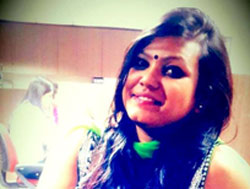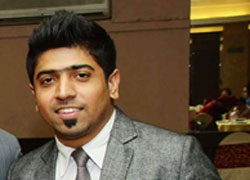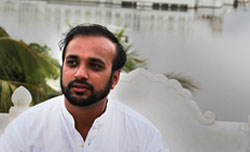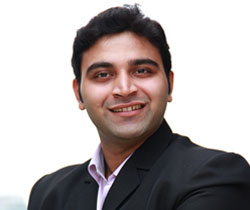The next generation of PR professionals are still struggling with PR measurement
PR Insight
Quick! If I said Da Da Ding, what would come to your mind? The much talked about Nike ad, of course. This high-octane Nike ad, featuring Indian women athletes. Yet, it’s rival, Puma, used PR to differentiate itself and fight back. Puma, using the tag line “Do you”, attempted to create a world record for the longest time you can hold a plank. This featured model –actress Cara Delevingne, Olympic winner Sakshi Malik, actresses Jacqueline Fernandez and Kalki Koechlin. The first used advertising as a starting point, the second PR.
 Despite the increased scope of most communicators work, it seems most PR professionals stil lack confidence due to the public relations' continues inability to link PR success to business results.
Despite the increased scope of most communicators work, it seems most PR professionals stil lack confidence due to the public relations' continues inability to link PR success to business results.
Nupur Singh, founder, The GearBox Media, points out that, “Considering we are a startup ourselves, a major part of our revenue comes from startup clients. At the end of every month we need to share a PR measurement report with the client and this is a major pain point, as other than AVE we do not have much to offer, in terms of quantity.”

“Give a brand time to see the impact of good PR over a reasonable period of time.” Neha Bisht, founder, Neha K Bisht Media Group.
Link PR with business results: a faraway dream?
Piyali Dasgupta, senior director, communications, marketing & communications with real estate firm, Cushman and Wakefield, says, “We are still unable to actually quantify the impact of PR on the business in terms of impacting the revenues. This is especially true for privately held companies. We need to create direct linkages towards business and see how exactly have PR campaigns increase revenue creation or top line growth and not gloat on our media position against our direct competition. That will what will be the future of public relations, else the management will not care for the work done.”
Piyush Lilaramani, senior consultant, Ketchum Sampark, agrees that, “A client will always try to measure the outcome in terms of sales.  Getting coverage in the medium that is read by the target consumers might have its impact in terms of increased sales but it always becomes a challenge to take credit of the same in front of the client, as there isn't any supporting research which we can produce to back it.”
Getting coverage in the medium that is read by the target consumers might have its impact in terms of increased sales but it always becomes a challenge to take credit of the same in front of the client, as there isn't any supporting research which we can produce to back it.”
Adds Lilaramani, “Right now the traditional methods of measuring the print cover is widely used by professionals. That's why, I feel it is always best to be frank with the client and ask for suggestions that how they want us to measure the coverage.”

“Measurement is usually used for pinpointing issues rather than improvising on PR, lack of brand building.” Neha Sawhney, founder, MuC (Media Updates Communique
Gaurav Bhat, senior account manager – corporate –Adfactors PR says that, “Most corporate communications team have also not been able to crack the code and are hence accepting the current standards of measurement. Thereby, there remains plenty of ambiguity over this complex and debatable area.”
While PR has gone well beyond media engagement into integrated marketing communications, Lubna Mohsin, strategy head-fashion, ELSOL strategy consultants says many of the IMC measures cannot be quantified.
She adds, “Ironically, clients are now defining their expectations from PR agencies on non-numerical activities however, the evaluation continues to be quantified. We still have a long way to go before we do away with the AVEs system altogether.”
 Siddharth Kadri, digital marketing manager, First Economy, says, “The challenge is not just about PR measurement. It is about integrated communications. We are now not just dabbling with AVEs but also with Alexa scores, impressions, reach, followers and number of visitors. The challenge is to have a one stop solution to measure integrated communications.”
Siddharth Kadri, digital marketing manager, First Economy, says, “The challenge is not just about PR measurement. It is about integrated communications. We are now not just dabbling with AVEs but also with Alexa scores, impressions, reach, followers and number of visitors. The challenge is to have a one stop solution to measure integrated communications.”
While a one stop solution is a silver bullet PR practitioners should stop searching for, the idea of a one size measurement fits all obsesses PR pros.
 Trusting Monitoring Agencies
Trusting Monitoring Agencies
The old image of a newspaper clippings agency where coverage is physically marked and culled from piles of newspapers has led to a certain mistrust among PR practitioners.
Senior account executive, Ronak Thakkar, says, “You can't depend totally or trust the results given by a monitoring agency because they don't have the bandwidth/scope of tracking/calculating the exact reach of your campaign/announcement. The quality of work can be measured with the help of a qualitative and quantitative survey to measure the impact it made to your target audience and based on the results you can judge for yourself and your work.”

“It’s still a question “Can we really measure the brand value with PR results?” Seema Choudhary, MediaValueWorks
Models of measurement: cracking PESO
The PESO or Paid, Earned, Shared and Owned is a model many IMC practitioners are following. Experts says the problem with this is that while paid, shared and owned all have tech to measure its’ impact; the one that provides most brand credibility – earned- doesn’t have much to offer in terms of measured results.
A big chunk of PR value, the SEO results drive by earned media are often unaccounted for- PR tech needs to be able to capture that.
Roopali Pasricha founder - SpotLYK Media, agrees saying that web measurement is a challenge, “ Some clients do think that with a PR Activity they will get traffic on their website but most publications do not provide back-links as well so it gets tough to even properly measure the online media. PR must adopt the use of paid, earned, shared, owned media to deliver the results.”
The views of the under 30 PR pros shows that not much has changed about the problems of PR measurement and new challenges of IMC and digital measurement have risen. Yet, never has the power of PR mattered more for a brand’s reputation.
If you enjoyed this article, you can subscribe for free to our weekly event and subscriber alerts.
Featured

PR professionals share their views on journalists publicly calling them out on story pitches

Auto blogger renders unconditional apology to Value 360 for defamatory posts

Hottest Indian startups of 2020, Paytm, Dreams 11 lead the charge: Wizikey Report




